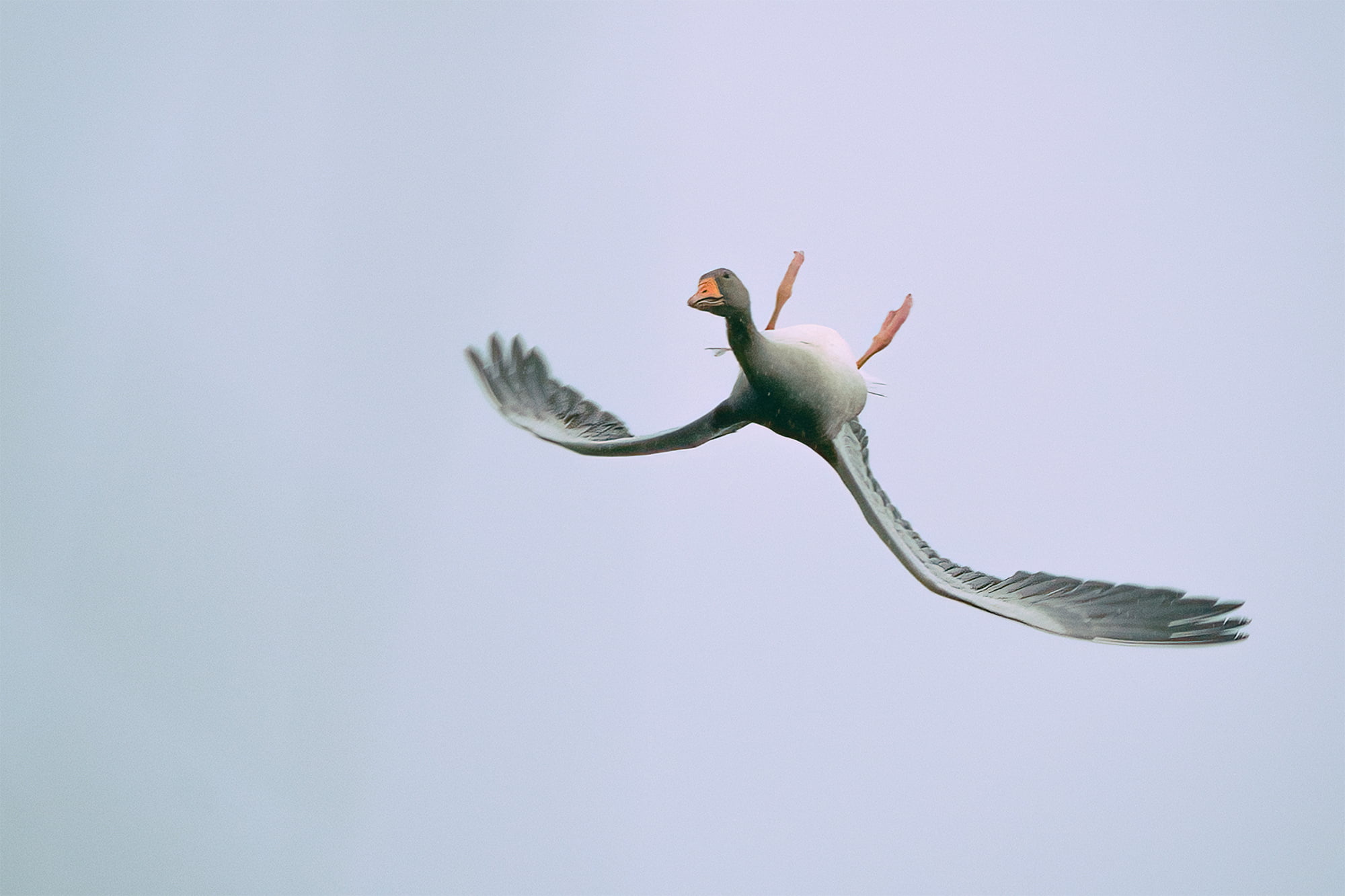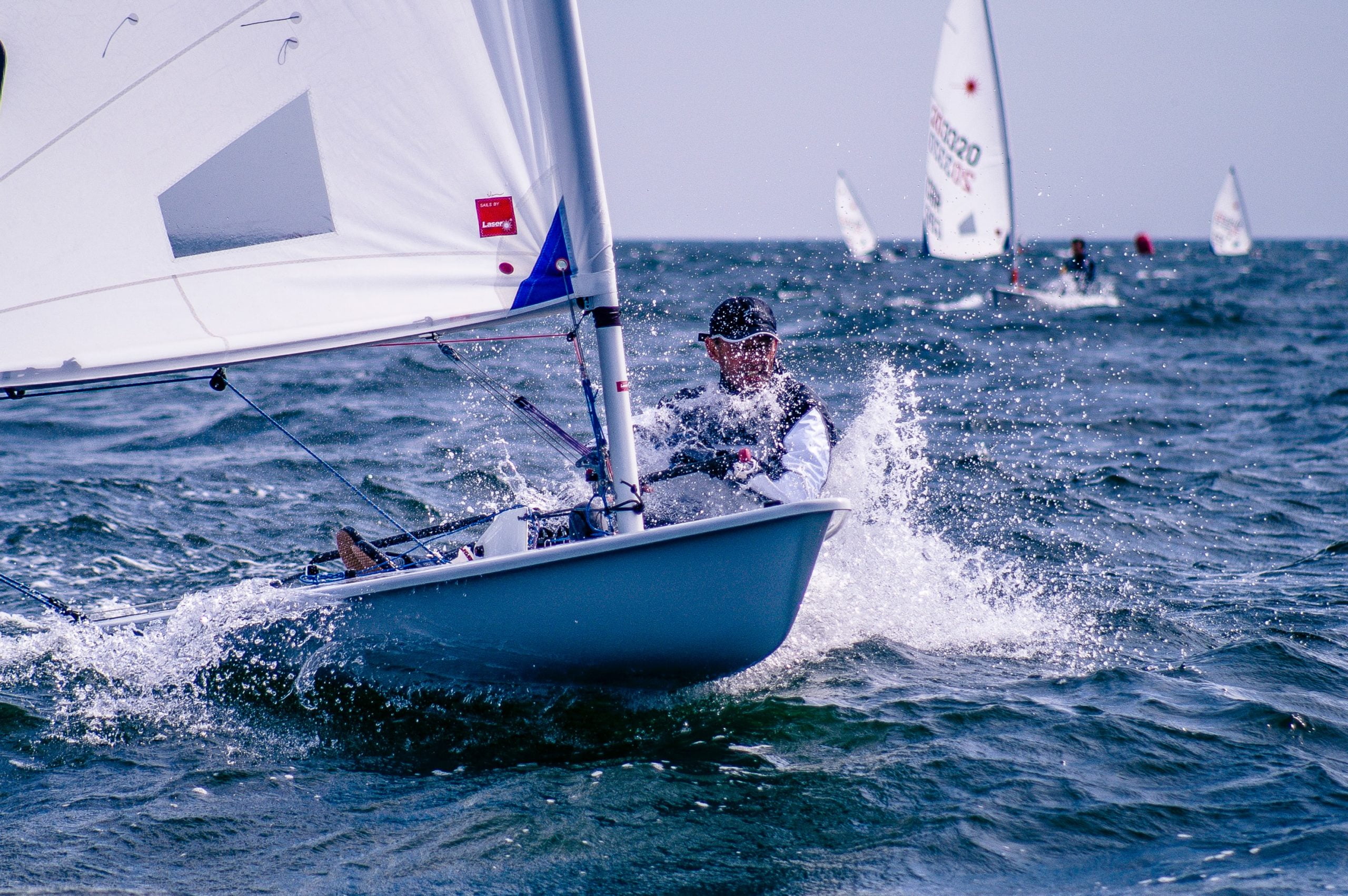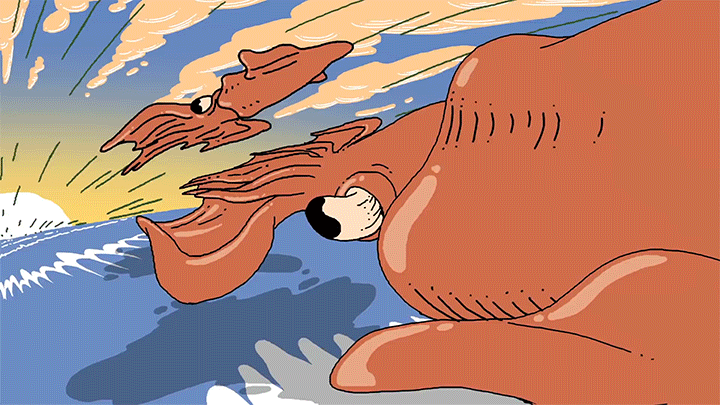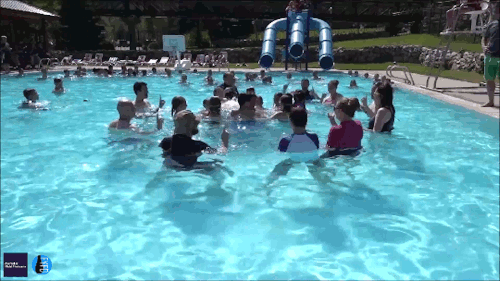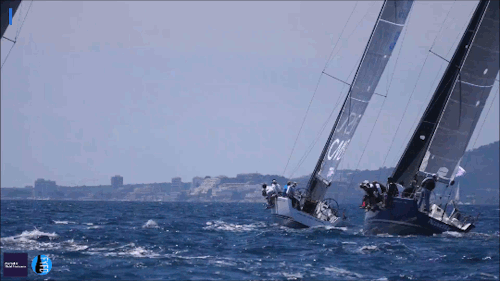In the early morning light, young photographer Max Wood captured this coot escaping a fight. With wings flapping, the bird runs across the water surface. Each slap and stroke of a foot provides a portion of the vertical force needed to stay atop the water; lift from its wings provides the rest. With enough speed, the bird will take off. Some birds, however, are born water-walkers; certain species of grebe don’t need to use their wings to run on water. (Image credit: M. Wood; via BWPA)
Tag: lift

Flying Out of the Water
Flying fish and diving birds often navigate the interface between water and air in their flight, but few studies have actually looked at the effects of this transition on lift. In this work, researchers measured forces on a small, fixed wing as it egresses from water into air at a constant velocity.

The tests showed that exit velocity had a large effect on lift generation. At low speeds, an exiting wing experienced a strong, positive lift spike as soon as the leading edge broke the surface. But that lift changed to strongly negative as the wing continued out of the water. At higher speeds, the wings had no lift reversal but also reached lower peak lift coefficients. The team studied the effects of angle of attack and starting depth as well, concluding that any vehicles intended to navigate the water-air transition will need robust control systems prepared to deal with fast-changing forces. (Image credit: fish – J. Cobb, wing – W. Weisler et al.; research credit: W. Weisler et al.)

Whiffling Geese
This wild photograph shows a goose flying upside down with its head turned 180 degrees in a behavior known as whiffling. In this orientation, the bird’s typical lift characteristics are reversed, but as you can see in the video below, this doesn’t exactly make them fall out of the sky. I suspect the geese compensate by changing their angle of attack (unless descending rapidly is their goal). There are numerous theories as to why the birds whiffle, including escaping hunters by using an erratic flight path or just showing off to the other geese. Maybe they’re just out to have a little fun! (Image credit: V. Cornelissen; video credit: Flightartists Project; via Colossal; submitted by jpshoer)

Tokyo 2020: Sailing Faster Than The Wind
It’s a bit mindboggling, but by exploiting physics and geometry, a sailboat can reach speeds faster than the wind propelling it. Steve Mould demonstrates how in this video using some cool tabletop set-ups. Like a wing, a sail generates force by changing the direction of the incoming air. But the optimal speed for a sail is the one where the the flow doesn’t get deflected from its initial path at all (middle). If the sail were moving slower than this, the air would get pushed aside, creating a force that accelerates the boat. If the sail were moving faster, the air’s deflection would generate low pressure that would slow the boat down. Given this ideal match, it’s straightforward to show that, with the right sail angle, a boat can cover more distance than the air pushing it does in the same amount of time (right). Part of the mark of a great sailor is knowing how to manipulate this relationship to maximize your boat’s speed! (Image and video credit: S. Mould)
Missed some of our earlier Olympics coverage? Check out how to optimize oar lengths for rowing, volleyball aerodynamics, and the ideas behind future swim technologies.

Tokyo 2020: Sailing Physics
At first glance, sailboats don’t look much like an airplane, but physics-wise, they’re closely related. Both the sail and hull of a sailboat act like wings turned on their side. Just as with airplane wings, the driving force for a sail comes from a difference in pressure across the two sides of the sail. The same effects applied to the hull and its keel (the wing-like extension that sits below the hull) provide the force that keeps a sailboat from slipping sideways as it cuts a path through wind and water.
Like airplane wings, sailboats also generate tip vortices: one from the top of the sail, the other from the bottom of the keel. Those vortices are typically invisible, but in foggy weather, like in the photo below, you can see the tracks they leave behind. (Image credits: top – Ludomił; bottom – D. Forster; research credit: B. Anderson; submitted by Lluís J.)

Follow along all this week and next as we celebrate the Olympics with sports-themed fluid dynamics.

When Squids Fly
Some species of squid fly at speeds comparable to a motorboat for distances of 50 meters. The cephalopods get into the air the same way they swim underwater: by expelling a jet of water through the center of their body. Once aloft, the squids spread their tentacles to form a semi-rigid wing-like surface for lift. They can also use fins on their mantle as a canard for additional lift or control of their altitude. Researchers suspect the squids use flight as an escape mechanism to put distance between themselves and predators, but it could also be a low-energy migration strategy since a single pulse carries a squid farther in air than in water. (Video and image credit: TED-Ed)

Planes Lift
Need a little refresher on how airplanes fly? The middle school students of The Nueva School have you covered with their latest science rap parody. They take a look at the four main forces on a flying airplane and even dig a little bit into the principles behind lift generation. Check it out! (Video and image credit: Science With Tom/Science Rap Academy)

Flying on Flexible Wings
Bats are incredible and rather unique among today’s fliers. Like birds, they flap to produce their lift and thrust, but where birds have relatively stiff wings, a bat’s wings are flexible. The thin webbing of skin stretched between the bat’s finger joints has muscles inside it that fire as the mammal flaps. This means that the bat may actively control just how stiff its wing is as it flies.
Compared to other natural and manmade fliers, the bat is incredibly agile and stable, able to recover from wind gusts in less than a full wingbeat cycle. They also have some incredible acrobatic capabilities. When preparing to perch, a bat loses almost all of its aerodynamic lift but still manages to maneuver itself so it flips over and grabs hold. Check out the full video above to learn more about these fascinating animals. (Video and image credit: Science Friday; research credit: S. Swartz and K. Breuer)
Editor’s Note: I’ll be travelling through the end of the month with limited email access. The blog should continue posting uninterrupted, but if you contact me, just know it may be awhile before I can get back to you. Thanks! – Nicole

Swimming, Cycling, and Sailing
Summer brings with it lots of great sports, and whether you love riding a bike, sailing a boat, or just hanging out at the pool, our latest FYFD/JFM video has something for you. Want even more sports physics? Check out the Olympic series we did for the London and Rio games. And if you’re looking for more of the latest fluids research, don’t miss the rest of our video series. (Video and image credit: N. Sharp and T. Crawford)

Flying Backwards
Spend a summer afternoon floating in a kayak and chances are you’ll see some impressive aerial acrobatics from dragonflies. One of the dragonfly’s superpowers is its ability to fly backwards, which helps it evade predators and take-off from almost any orientation. To do this, the dragonfly rotates its body so that it is nearly vertical, thereby changing the direction it generates lift. In engineering terms, this is “force-vectoring,” similar to the techniques used by helicopters and vertical-take-off jets.
Scientists found that backwards-flying dragonflies could generate forces two to three times their body weight, in part due to the strong leading-edge vortices (bottom image) formed on the forewings. They also found that the hind wings are timed so that their lift is enhanced by catching the trailing vortex of the first pair of wings. Engineers hope to use what they’re learning from insect flight to build more capable flying robots. (Image and research credit: A. Bode-Oke et al., source; via Science)



